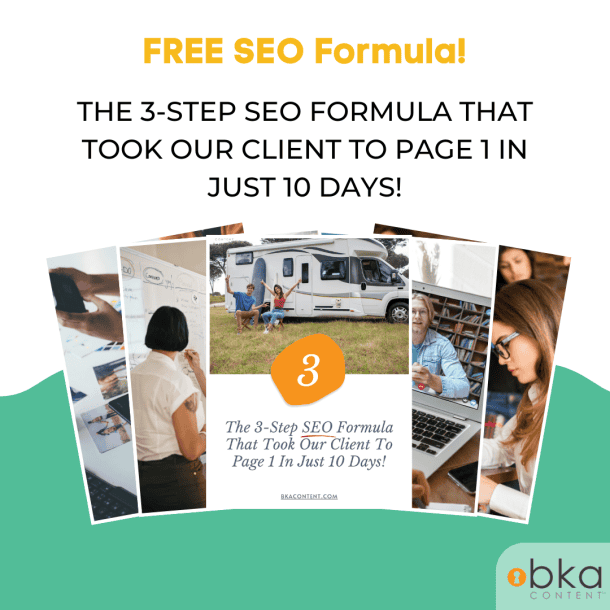
How To Incorporate Infographics Into Your Content Marketing Strategy
It is highly beneficial to leverage the power of the almighty infographic in your content marketing. A significant portion of the way that people remember information comes from the visual impact of that information. Because of the additional colors and images, infographics stand out much more than regular text, and the information is better retained.
Over half of marketers recognize the power of an infographics strategy, designating them as an important part of a marketing strategy, but that does not mean they know how to effectively use them.
How To Use Infographics Strategy in Content Marketing

In this infographic blog post, we’ll cover some of the basic steps to create and implement an infographic strategy in your content marketing campaigns.
1. Develop a Compelling Infographic
The first step in incorporating infographics into your marketing strategy is the infographic itself. Think outside the box when developing the information you include in your visuals, or when searching for existing ones to add to your content. Consider the products or services you provide. Draw a web of interconnected issues in which your target audience might be interested. For example, if you sell something straightforward, such as clothing, your infographic does not have to only discuss different types or styles of clothing. Choose one about the history of t-shirts or color theory and its influence on fashion. Once you have a strong visual in place, it is time to develop a strategy for incorporating it into your content marketing.
2. Follow Up With Related Content
There are many ways to use the included data as a jumping off point to dive in detail about one or more areas included in the graphic. For example, perhaps your infographic showcases the statistics surrounding the benefits of a particular product, service, or other information, such as the benefits of content marketing. Create a blog post about tips on taking advantage of this product or service and a video teaching the same information. One blog could focus on developing unique content and another could look at the pros and cons of outsourcing the writing. This extends the life of your visual and provides an easy way to cross-link your blog so that traffic will read more than one post.
3. Add to Newsletters

Your own digital marketing properties, including your email newsletters, provide valuable places for sharing your infographics. It also benefits the marketing channel by increasing its effectiveness. For example, including strong visuals in your email newsletters helps to increase your click rate and engage with your audience.
These are especially useful to send out to new leads in your email list to help shuffle them along the funnel from prospective lead to conversion to customer or client. To amplify its impact, place it above the fold so that it engages with the customers and keeps them scrolling down through the entire email. This increases the chance of a reader seeing more of the email, including other blog posts or marketing collateral you might share.
4. Post to Social Media
Finding shareable content is an essential component of a successful social media marketing campaign. Users share infographics more often than any other type of content, making them a powerhouse addition to your overall content marketing strategy that includes social media.
Sharing it to your different social media profiles will help to gather more likes and shares, increasing the reach of your social media. However, if you have a really big infographic, it might not be as effective. The visuals that work best in social media tend to be small and easy to read, especially on mobile devices. Therefore, you might need to create a mini-infograph out of your main one.
This does have its benefits, as it gives you multiple posts out of just one infographic! You can use these as part of a strategic plan for a series that keeps your followers coming back for more information each day or week, depending on how often you share the next infographic. At the end of the period, cap it off with a special blog or other content that wraps it up.
5. Write a Blog Post

Your own blog is an excellent place for sharing your infographic. Your blog provides a space to expand on the information included in the infographic with more details.
You do not simply have to create a blog that is the text version of your infographic. It is possible to use pieces of the information found within the graph and expand on that, leading to an entire series related to the same infographic. It can also be used as evidence for one particular part of a blog that discusses a related topic. For example, if you have an infographic with the statistics regarding the power of mobile marketing, include it as a visual in a blog about the benefits of SMS marketing.
It also helps the SEO of your blog. It is possible to code the infographic so that it will link back to your site. When people share it, you will have a quality hyperlink back to your post. This increase in backlinks helps you rank higher in search engines, improving your overall digital marketing efforts.
6. Share with Influencers & Other Blogs
Leverage the power of infographics and spread the word about your brand by getting others to share your infograph for you. Expand your reach by getting influencers and other blogs to share it on their site and with their followers. Working with influencers has the potential to not just gain you more followers but also lead to twice the sales and 34 percent higher customer retention. If you are unsure with whom to share it, you could simply post it on sites dedicated to sharing infographs, such as Visual.ly, Infographr, and Daily Infographic.
Implement an Infographics Strategy With Your Content Marketing
Integrating infographics into your content marketing strategy provides visuals that are alluring to customers and fit nicely in your various channels, including social media, email, blogs and your website. There’s a reason that 60 percent of marketers find them the most effective format.
- How To Use Keywords in Your Content for SEO - May 10, 2025
- How To Get Your Business on Top of Google Search - March 21, 2025
- How SEO Helps Your Business (and Why You Should Start Today) - February 21, 2025



This is a great strategy to use infographics and promote it and using blogs and newsleter for that is a good idea.